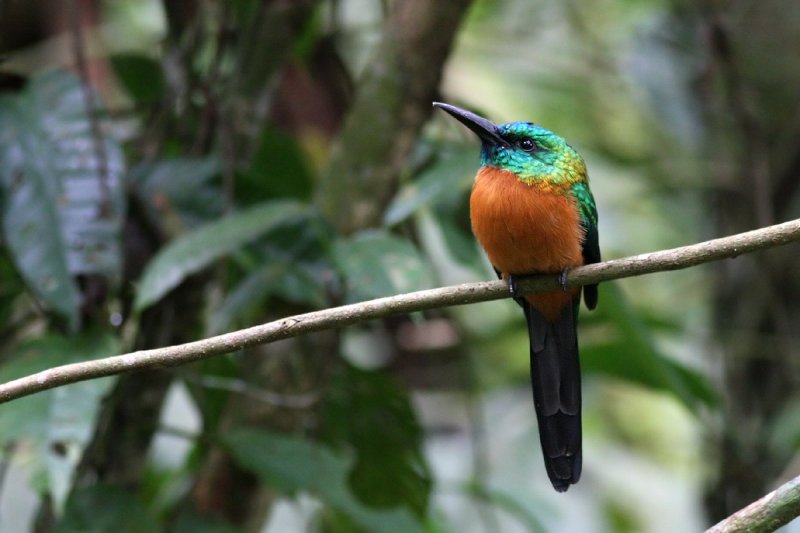
Jacamerops aurea
TAXONOMY
Jacamerops aurea Mьller, 1776.
OTHER COMMON NAMES
French: Grand jacamar; German: Breitmaul-Glanzvogel; Spanish:
Jacamar Grande.
PHYSICAL CHARACTERISTICS
The largest jacamar: 12 in (30 cm) long, with thick, slightly
curved bill. Metallic green upperparts, white narrow band on
throat, rufous underside, with bluish black underside of tail.
DISTRIBUTION
Venezuela, Ecuador, Costa Rica, Bolivia, and Amazonian Brazil.
HABITAT
Riverine forest, lowlands.
BEHAVIOR
Quieter and slower moving than other jacamar species. Known
for its mournful-sounding call.
FEEDING ECOLOGY AND DIET
Preys on flying insects. Catches prey in mid-air and batters it
against a branch before consuming it.
REPRODUCTIVE BIOLOGY
Lays one to four white eggs in ground-hole nest cavity. Incubation
is 20–23 days. Chicks emerge from nest after 21–26
days, covered in white down. Both sexes incubate, and care for
chicks.
CONSERVATION STATUS
Not threatened.
SIGNIFICANCE TO HUMANS
None known.
Photo Gallery of - Great jacamar
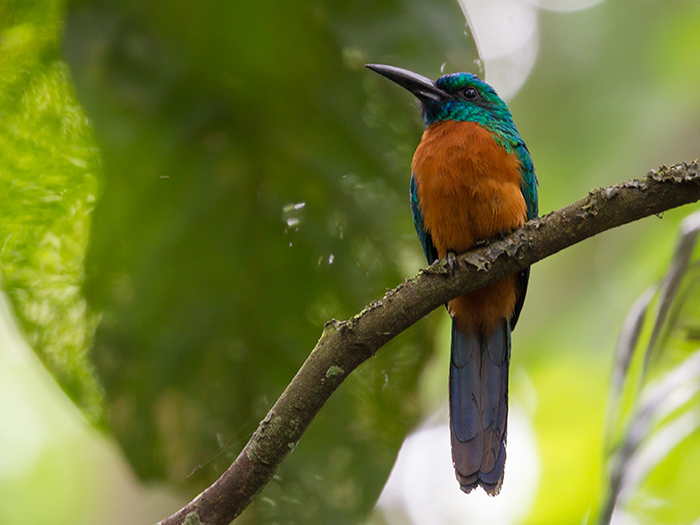
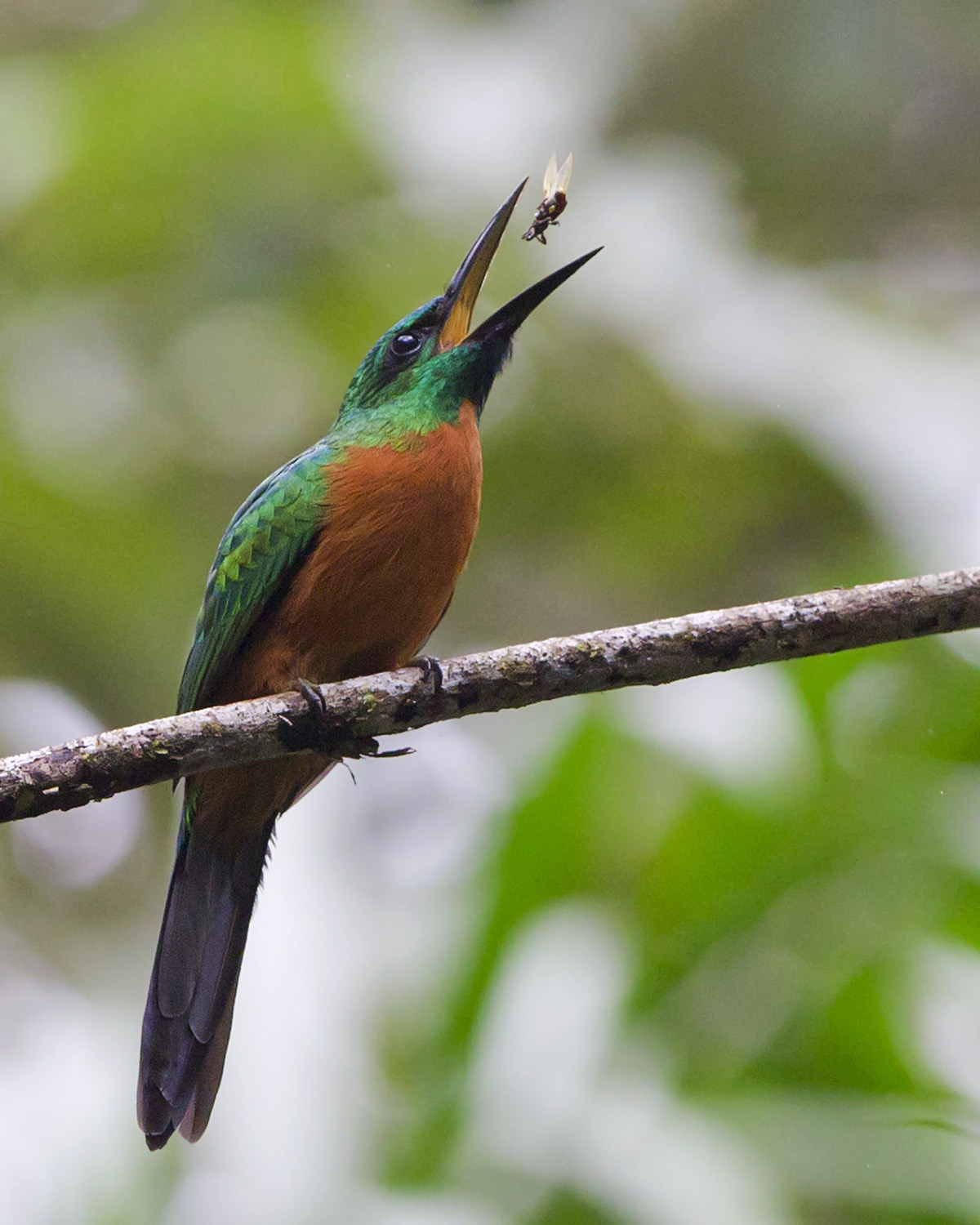
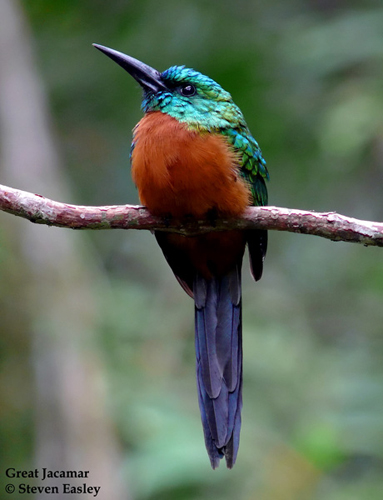
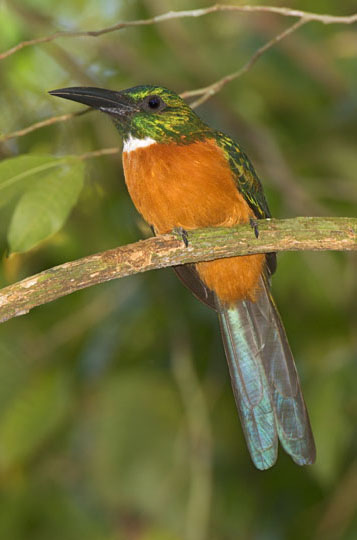
 Animalia Life
Animalia Life